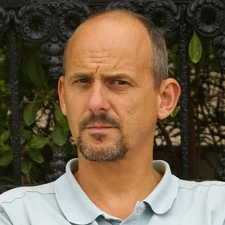Peter A. van der Beek

The 2014 Ralph Alger Bagnold Medal is awarded to Peter A. van der Beek for his fundamental contributions to the understanding of landscape evolution in a wide range of environments including actively eroding mountain ranges, passive margin escarpments and continental plateaux.
Over the past 20 years, Peter A. van der Beek has used low temperature thermochronology to provide geomorphology with indispensable constraints on landscape evolution in a wide range of environments, from passive margin escarpments to actively eroding mountain ranges and continental plateaux. His data, and the original ways in which he has interpreted those data, have provided geomorphologists with unique and quantitative constraints on the rates of landforming processes and the pathways of landform evolution, enabling them to choose between competing models for passive margin evolution, for example. Van der Beek has also made strong contributions to the on-going debates on the efficiency of couplings between tectonics, climate and erosion in relation to the role of intensified glaciation in increasing sediment fluxes over the Late Cenozoic.
His publications are underpinned by sophisticated numerical modelling. Thus, to many, he is best known as a world-leading numerical modeller, but also as someone with an impressive ability to combine data collection and interpretation. He has helped to build and calibrate sophisticated numerical models, and has carefully selected key sampling sites that provide high quality numerical data to test a range of complex scenarios. This is clearly evidenced in most of van der Beek’s publications where he not only provides standard uncertainty bars on his and his co-authors’ data, but also estimates of the uncertainties in the values of the model parameters he is attempting to constrain to test a tectono-geomorphological scenario or process. This sophisticated, careful and honest approach to his science has greatly enhanced the field of geomorphology.
In short, van der Beek has been a leader in the transformation that geomorphology has experienced in the past few decades – towards a better understanding of the processes at play and the rates at which they operate. For these reasons, he is a worthy recipient of the Ralph Alger Bagnold Medal.
